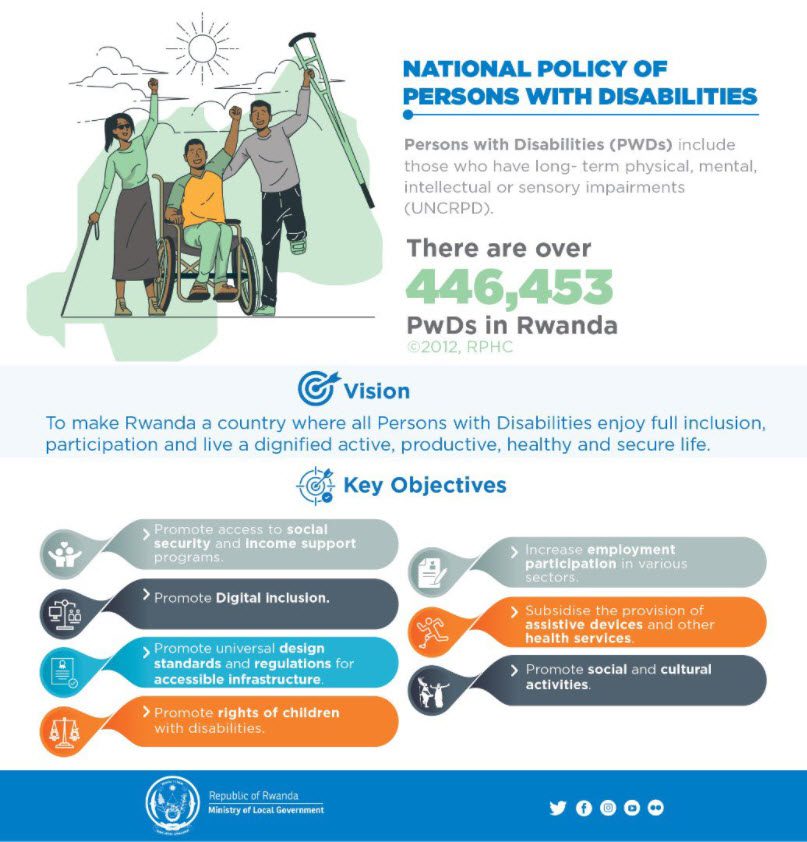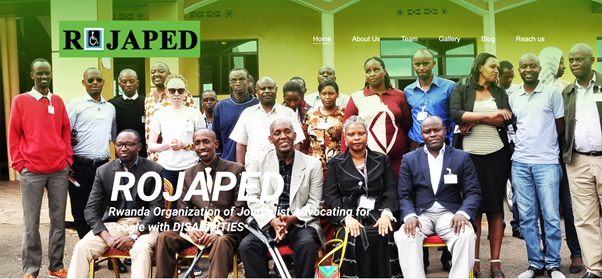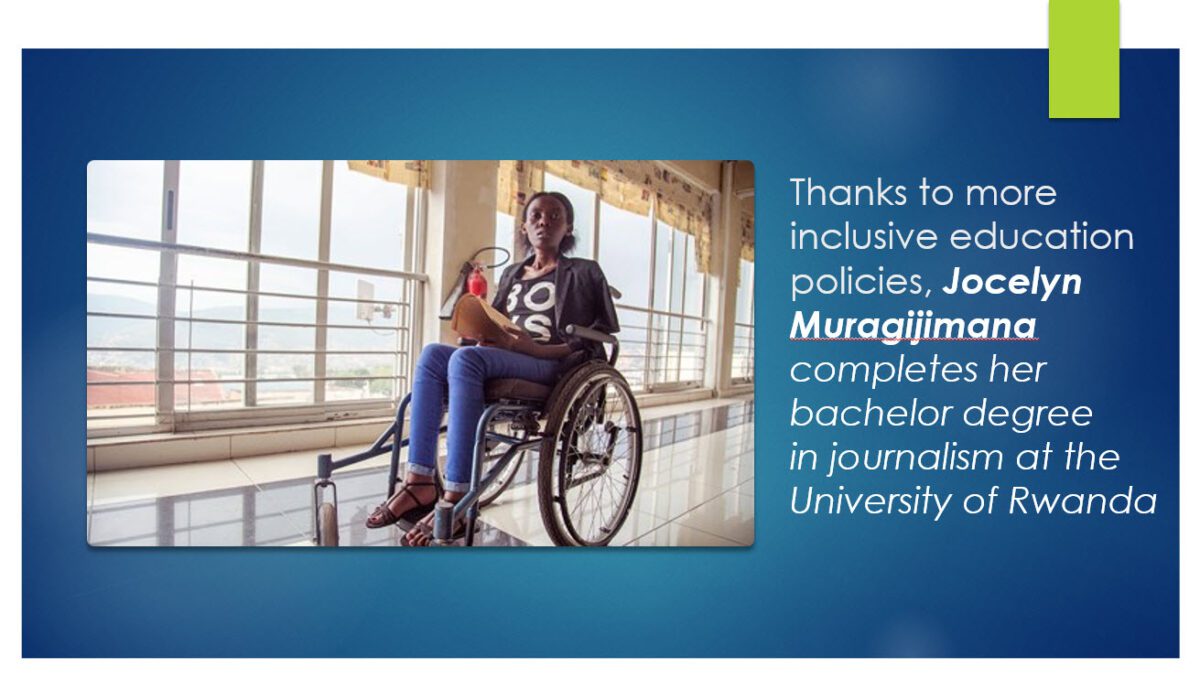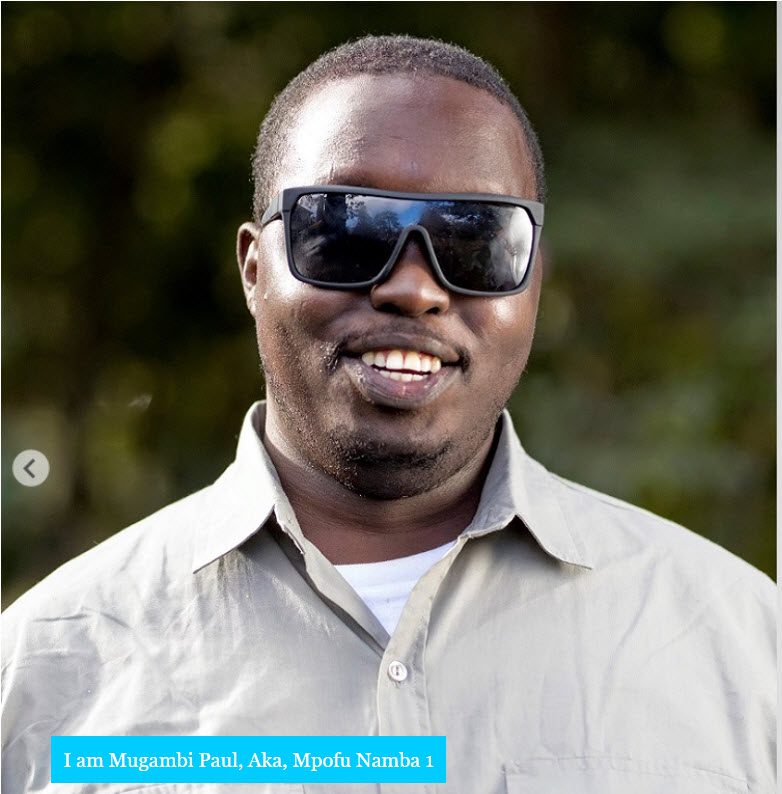Third and Final Disability Reporting Webinar Round Up by Kathryn Cleary
In the third and final webinar in an insightful three-part series on reporting on disability, Internews Inclusive Media Project Manager, Jackie Lidubwi, was joined by two guest speakers from East Africa. Musafiri Innocent, Program Manager with the Rwanda Organisation of Journalists Advocating for Persons with Disabilities (ROJAPED), spoke about the organisation’s work with local journalists, and Paul Mugambi from Kenya, a cricket player and well-known humanitarian worker who is blind, shares his recommendations for journalists reporting on disability.
While reading through public policy may not be a journalist’s favorite thing to do, it’s important to understand national and international policy frameworks concerning persons with disability (PWDs). By knowing what these frameworks say, journalists can monitor their implementation and better hold their home country’s government to account. This allows journalists to better report on disability.
ROJAPED
Recently in Rwanda, the national government released a new four-year policy plan for PWDs. The plan states that,
“The National Policy of Persons with Disabilities builds on Government’s commitment to empower, support and promote the inclusion of persons with disabilities in the country. The policy recognizes the achievements within the disability component and seeks to build on these strengths as the Government launches the next phase of development plans including the National Strategy for Transformation (NST1) and Vision 2050.”

For ROJAPED, this new policy is a positive step in the right direction, as PWDs make up approximately 5 percent of the country’s population, says Innocent.
ROJAPED’s work consists of different interventions, he adds, consisting of advocacy and reporting work, as well as training journalists in sign language and other forms of inclusive communication.

ROJAPED participates in disability forums, policy dialogues and works with local media partners to strengthen reporting on disability. The organization also has a magazine called Solidarity and produces various radio and television programs as well as documentary films.

ROJAPED’s work helped to catalyze the implementation of Rwanda’s new four-year policy plan, well done!
DISABILITY SAUSAGE
Ok, I know what you’re thinking, what do we mean by ‘disability sausage’?! It’s not what we mean, but who, and that’s Kenyan cricketer, humanitarian and artist, Paul Mugambi, who is blind. Mugambi heads up Disability Sausage media and consultancy, a public policy think tank and media awareness enterprise. As a Person living with disability, Mugambi shares his advice for journalists on how to better report on disability.
“15 percent of the global population is PWDs, and PWDs often lack access to information about policies, laws and improvements in programmes and services that directly affect them. This knowledge gap perpetuates their exclusion from mainstream social, economic and political life,” he says. “Media is a powerful tool of transformation, it’s a tool for communication and [a] change agent.”
From the United Nations Convention on the Rights of Persons with Disabilities, Mugambi says that there are specific sections of the convention that journalists can use to drive disability related policies.

One section states that state parties must undertake to adopt immediate, effective and appropriate measure to:
- Raise awareness through society regarding PWDs and to foster respect for their rights and dignity,
- Combat stereotypes, prejudices and harmful practices relating to PWDs,
- To promote awareness of the capabilities and contributions of PWDs.
If journalists can keep these sections in mind, they can improve their reporting on PWDs and help hold the powerful to account, says Mugambi.
Making the Newsroom Inclusive
Improving reporting on disability is not just about the content, but also about how we work with PWDs in our own newsrooms. “When we talk about inclusive newsrooms or inclusive media, we are saying that we should have a responsive media which is responsive to the rights and needs of PWDs, by having inclusive programming and policies and also accessibility,” emphasises Lidubwi.
There are barriers to having an inclusive newsroom, she adds, which includes attitude, communication, accessibility and policy issues. “We need to develop guidelines for including PWDs in our newsrooms. We need to have action plans on having a human rights approach to reporting on disability, and not a pity or heroic angel,” she says.
Myths on disability reporting in newsrooms that can lead to a non-inclusive newsroom or media:
- Not so many people with disabilities, so it is a non-issue
- Few advertisers on Disability Programming
- Accessibility is about ramps and wheelchairs
- Including PWDs is costly and time consuming
- Disability is a health issues
- PWDs are sensitive and hard to deal with
None of these myths are true, and call for a greater focus on training journalists on reporting on disability. “We need to provide training and mentorship because we realize that journalists don’t really train [in this area], and in our training [and learning] institutions we don’t really offer disability reporting,” says Lidubwi.
Challenges that media houses encounter:
- Lack of capacity and facilitation for journalists to cover stories on PWDs in far areas
- Lack of locally produced disability materials for journalists to use
- Lack of employment of journalists with disabilities in newsrooms
- Lack of specialisation on disability reporting
- Physical barriers in the newsrooms like lack of ramps makes wheelchair users have difficulty with access
- Lack of disability policies in newsrooms
According to Lidubwi, including PWDs in the newsroom is as simple as identifying PWDs and their respective organisations (DPOs), and building partnerships with these DPOs to ensure newsroom’s have suitable programmes to meet the needs of PWDs. Working with DPOs is also a way of making sure the information journalists use is credible, she says.
“We also need to evaluate the situation of PWDs and this is what journalists do: research, research, research. We need to research about PWDs and be able to find out which areas they need coverage, which areas are impactful to them, so we are able to cover their stories in ways that they appreciate, not the way that we see is a good way to cover it,” says Lidubwi.